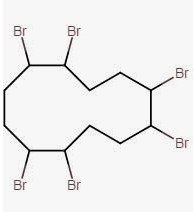The Environmental Protection Agency (EPA) of the USA has published the Final risk evaluation for HBCD (Cyclic aliphatic bromide clusters) compounds. EPA has evaluated risks of using the chemical in 12 environmental circumstances out of which in 6 circumstances, it has been that HBCD causes unreasonable risks. Among them, construction & building materials are exposed to a large amount of HBCD, which leads to unreasonable risks to workers, occupational non-users under the fields of processing, usage & disposal.

EPA confirmed that it could not find any unreasonable risks by HBCD to the general public & consumers. However, the next step in evaluating HBCD must be done by the TSCA committee by developing a plan to eliminate the findings of unreasonable risks mentioned under the evaluation of the final risk. EPA states that it “is moving immediately to risk management for this chemical and will work as quickly as possible to propose and finalize actions to protect workers, occupational non-users, and the environment.”
The TSCA committee will work based on how the HBCD’s limiting or prohibition will impact the manufacturing, processing & distributing in market places & also they will highly focus on their disposal activities. EPA has been strongly recommending the users of the products containing HBCD to carefully evaluate & follow the instructions on the product label & safety data sheets.
Reference link :https://www.epa.gov/assessing-and-managing-chemicals-under-tsca/final-risk-evaluation-cyclic-aliphatic-bromide-cluster#documents
Findings of the risk evaluation of HBCD by EPA can be found under: https://www.epa.gov/sites/production/files/2020-09/documents/1._risk_evaluation_for_cyclic_aliphatic_bromide_cluster_hbcd_casrn25637-99-4_casrn_3194-5_casrn_3194-57-8.pdf
If this regulation is applicable to you and you are interested in knowing more about this topic and available solutions, then schedule a free consult with our experts.


